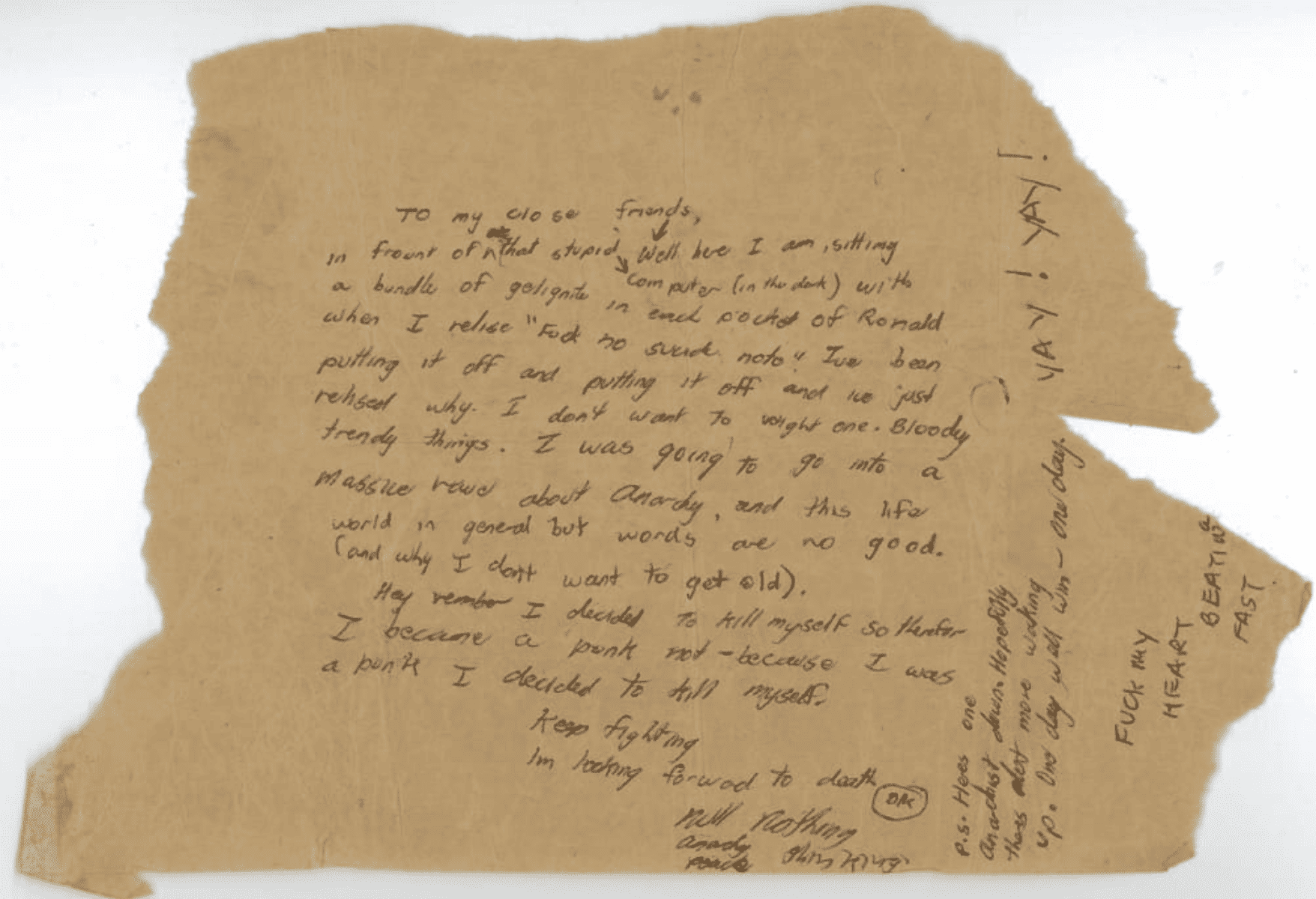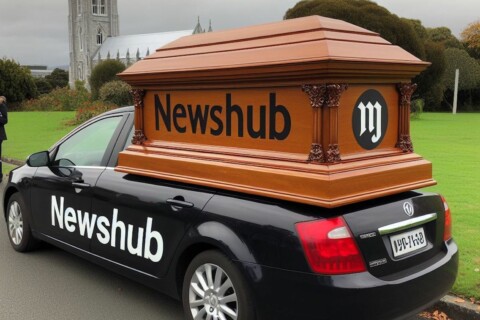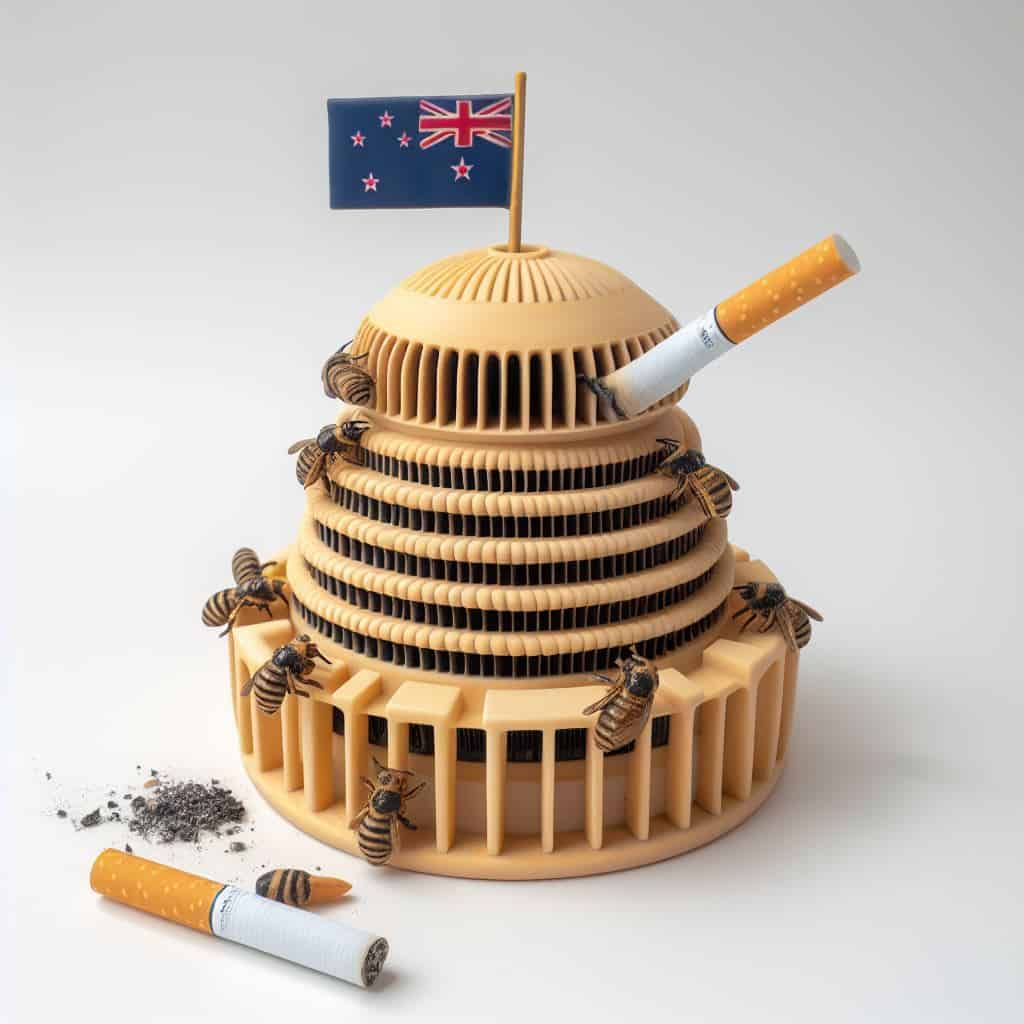In 1983 some friends of Neil Roberts, who had blown himself up at the Wanganui Computer Centre, wrote this sort-of eulogy for TOM magazine.
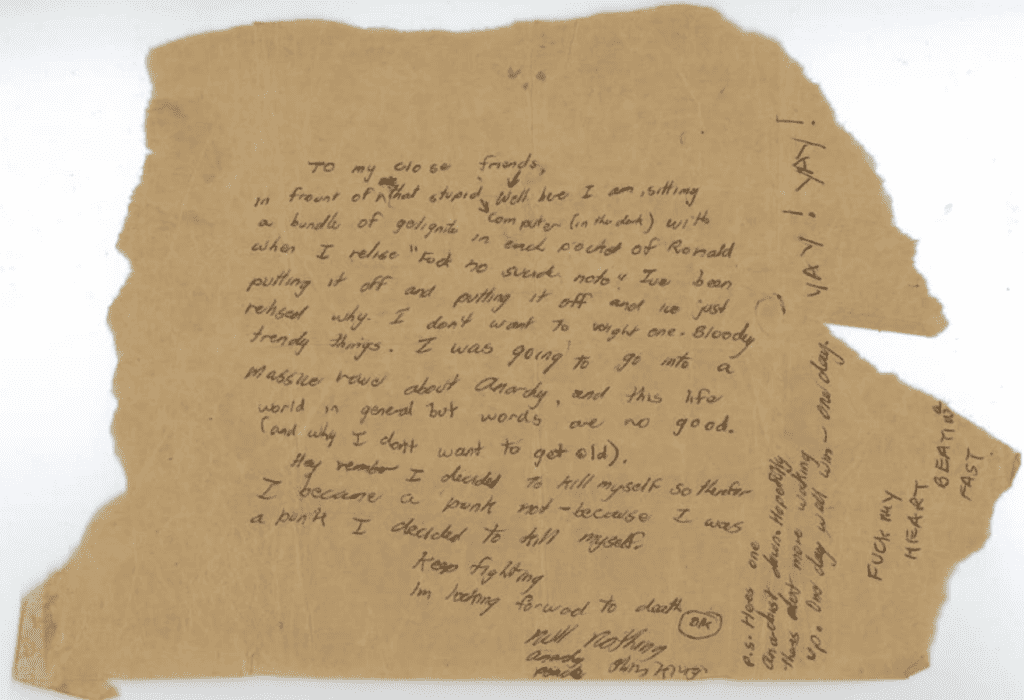 November 18. Bang. That date last year Neil Roberts blew himself up outside the Wanganui Computer Centre. The following is a recollection of Neil, and an interpretation of his final act, by four friends. They say it is “not the total story but an attempt to put a few things right about a sane friend who died for all of us.”
November 18. Bang. That date last year Neil Roberts blew himself up outside the Wanganui Computer Centre. The following is a recollection of Neil, and an interpretation of his final act, by four friends. They say it is “not the total story but an attempt to put a few things right about a sane friend who died for all of us.”
The first time I saw Neil he looked like a barefoot Franciscan monk. He was raging away to some band in Auckland in 1980. I asked someone who he was, and he simply said, “He’s a guy who’s going to kill himself before he’s 21.”
Being unemployed, and running around town and getting into parties, bands and drugs in Auckland, I got to know him quite well. He was a sociable and honest person who had a strong desire to find the real motive behind people.
By 1981 violence and depression had killed off clubs like XS and Zwines and there were no bands left for us to follow. The ones that were left had no social conscience and were caught up in Auckland’s commercial music racket.
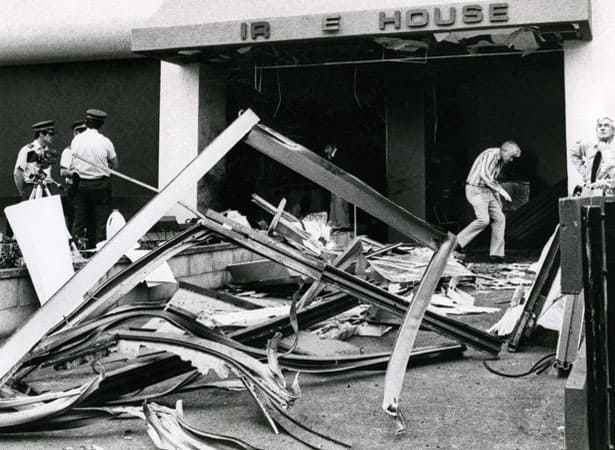 Then came the Springbok tour. Neil was the first person arrested because of it – as recorded in the film Patu! On the first march, 10 rows of police mobilized outside Barnacle Bill’s pub. The pub moved out onto the street and all the cops had to stand to attention while Neil spat on them and poured beer over them. When the march started his was immediately arrested and was locked up for four days. He got beaten up four times before being released without charge.
Then came the Springbok tour. Neil was the first person arrested because of it – as recorded in the film Patu! On the first march, 10 rows of police mobilized outside Barnacle Bill’s pub. The pub moved out onto the street and all the cops had to stand to attention while Neil spat on them and poured beer over them. When the march started his was immediately arrested and was locked up for four days. He got beaten up four times before being released without charge.
We all followed the tour right through and that’s history. But the moment it finished we felt that, apart from us, the rest of NZ was quite happy to return home and forget it happened. But three of us, Neil included, would sit day after day in a local pub planning ways to get back at those who wanted the country under State control. We wanted to get back at the Government for what it had done – utu – and for them to really feel it.
The injustice carried on after the tour. Minorities (eg, punks) started getting whacked by a suddenly more aggressive police force with new riot gear; the SIS law was coming into power; and the Noise Act was becoming law. The only thing we found to fight back with was justice through vandalism.
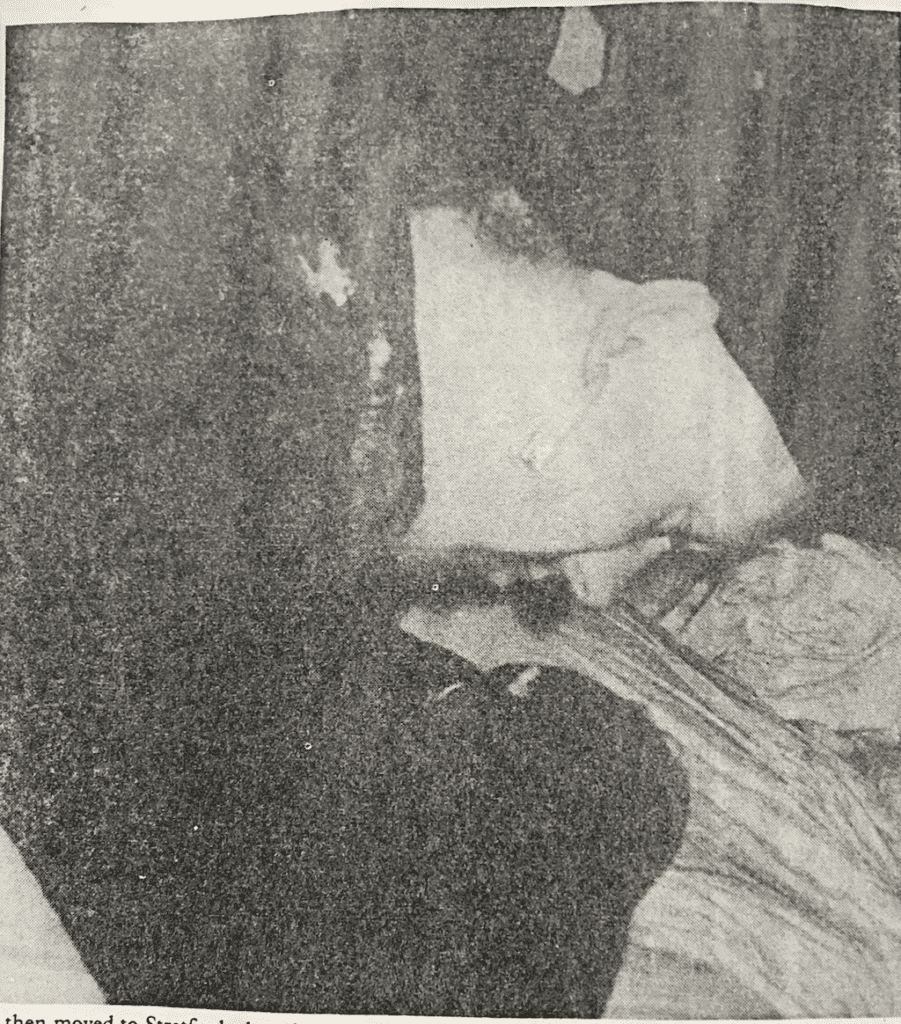 Neil with his friends decided it was time to get out of Auckland, which had become more and more violent. He sold his house and got together $17,000. I remember walking around the shops with Neil and he had $3000 cash on him, buying anything we wanted. He bought a bus which was for the mutual benefit of his friends.
Neil with his friends decided it was time to get out of Auckland, which had become more and more violent. He sold his house and got together $17,000. I remember walking around the shops with Neil and he had $3000 cash on him, buying anything we wanted. He bought a bus which was for the mutual benefit of his friends.
(It’s still in the South Island. Just before he died, he posted a letter saying anyone who wanted it could have it).
The bus – which was registered ‘John Lydon’; that poor bastard is facing a lot of fines – moved slowly to Coromandel and down to Wellington and the South Island’s West Coast. The idea of the bus was to have a moveable bach where people could go to get away from the rat-race, but couldn’t afford to any other way. It was far away from cops and those who put rules on you. It moved from day to day. You could control your own life on it.
However, people eventually got bored with the isolation of it. They started drifting up to and around Wellington; Neil came up to see The Fall and then moved to Stratford where he worked on a friend’s farm.
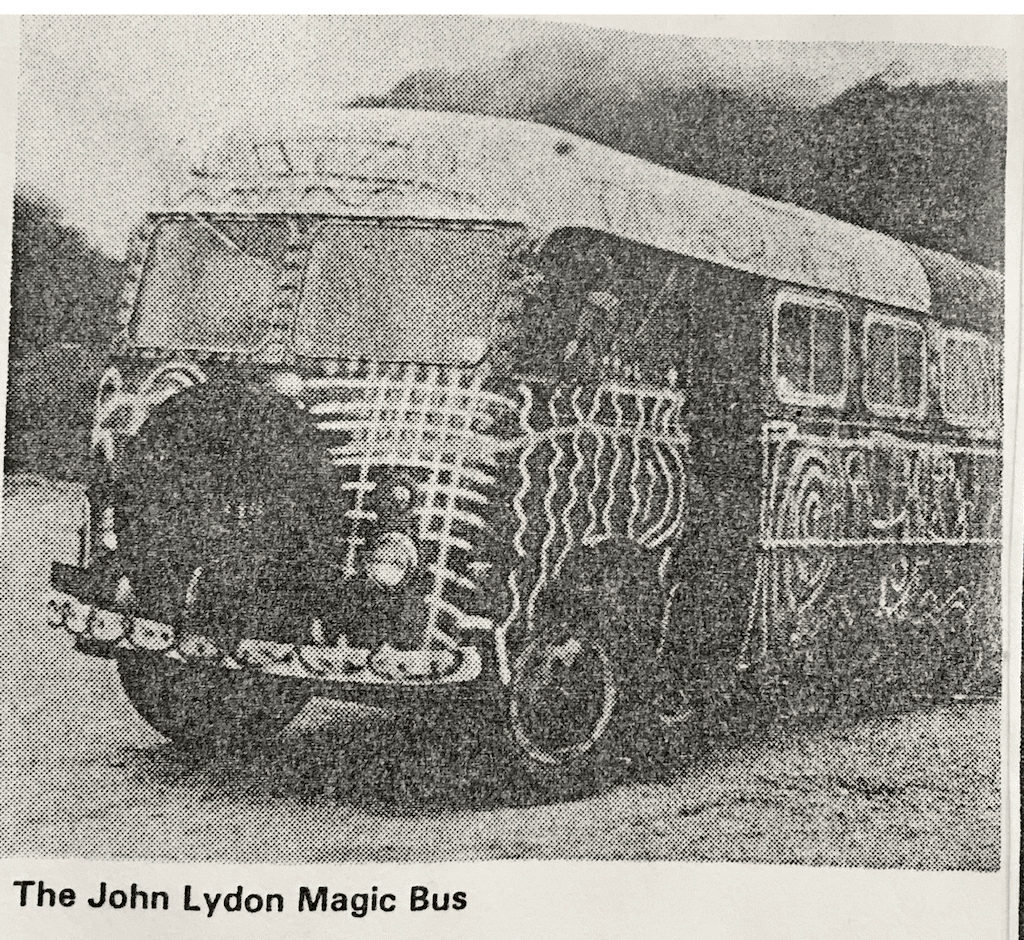 About June of ’82 at a demonstration outside the Miss Auckland contest, he told a friend to watch the newspapers later in the year because he had a plan to blow up the main water-pipes and cables of a South Island dam which had ruined the environment.
About June of ’82 at a demonstration outside the Miss Auckland contest, he told a friend to watch the newspapers later in the year because he had a plan to blow up the main water-pipes and cables of a South Island dam which had ruined the environment.
Then I saw Neil at New Plymouth airport – it was a fluke meeting – and we flew up to Auckland together. He was wearing the clothes he had just been milking in and his legs were covered in cow shit. It was two weeks before he killed himself.
In Auckland the people at the flat we stayed at had applied for a Labour Department grant to start up an Anarchist Collective. They wanted to set up a place for people to create their own art. The application was turned down, and the SIS started investigating everyone at the flat, and the CIB watched us most of the time Neil and I were there.
Neil invited us all to Stratford for a hangi the week before the explosion. Being an expert in war games, he had planned for some months since stealing the dynamite from a commune and what to do with it…
I know Neil achieved what he set out to do at the Law Enforcement Services Computer in Wanganui. Being a pacifist, he did not try to get right inside because he might have killed someone. Neil did not believe in violence. I once saw him get punched over by a bikie in a pub; Neil got a really bad fat lip, but instead of going for the guy, he tried to reason with him. He also knew that destroying the computer would not obliterate the information inside, as they keep duplicates elsewhere.
Neil summed up, with the writing on the wall, in his statement. He wrote “Anarchy, Peace and Thinking” and “We have maintained a silence closely resembling stupidity.”
Anarchy: Neil had read most writers on political thought. He followed anarchosyncrhonism, the most idealistic form of anarchy, and believed anarchy was the only honest consciousness possible.
Peace: If you live in the streets you’ll see how violent NZ is. Neil knew it was because the poor were frustrated and exploited by a strange country which prides itself on dying for other people’s wars across the other side of the world, and by a government who try as much as possible to get involved in other countries’ conflicts.
Thinking: The large number of us who aren’t controlled by 9-to-5 work can see through the petty pursuits of materialism, and a consciousness narrowed and dominated by complacency and personal trivia.
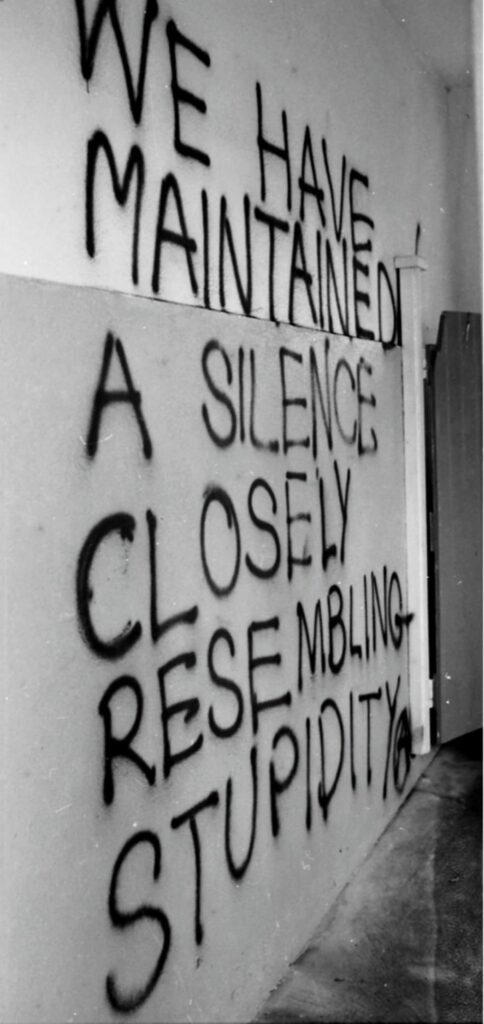 Neil wanted a free and equal society organized on non-authoritarian principles.
Neil wanted a free and equal society organized on non-authoritarian principles.
We have maintained a silence closely resembling stupidity. Neil is a product of your society. Just think and look how NZ’s changed and the things that have happened to this country in the last three years. He made a true decision to migrate from the system.
Neil was determined not to get old, to mellow out and slowly watch his friends straighten out and join what they hate – like the filthy hippies of the last generation, He did not want to watch his country turn into a police state with the inequalities between the classes increasing.
He had done everything he wanted. He controlled his own fate.
+ Edited, abridged, condensed and generally shortened by TOM.
+ Gary Steel comments: I published and edited TOM magazine but have no memory of who these friends of the unfortunate Neil Roberts were. If anyone can shed some light on how this story came to be, I’d love to know! Neil Roberts’ extreme act feels like a long, long way back through time and a piece of NZ history that many aren’t even aware of, but it was huge news at the time and New Zealand’s punk/post-punk fraternity were hugely effected by it. Please also read the 2015 RNZ story, which puts the even in a mental health context.
+ Also worth a look is this story on Roberts published in 2015: https://www.rnz.co.nz/news/the-wireless/373579/an-anarchist-with-a-death-wish

